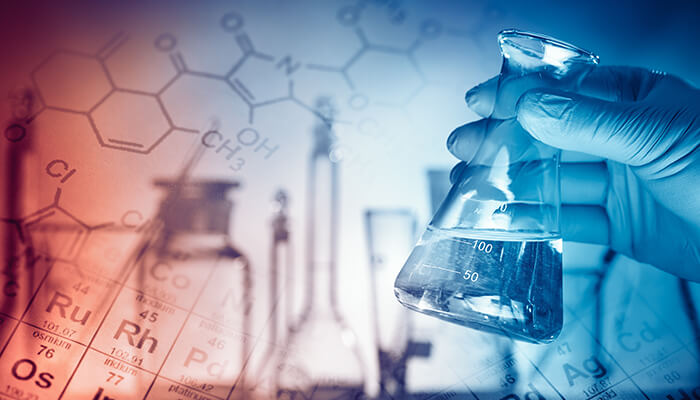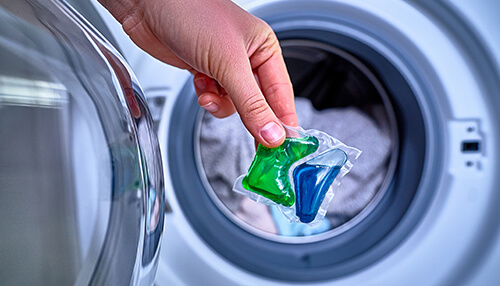Polyvinyl alcohol is a versatile material with many uses in industries from food to textiles, electronics, and construction. It’s primarily produced in the Asia Pacific region, which makes up the majority of its market share.
According to a market research report, the PVA global industry is predicted to reach a market value of nearly USD$2 billion by 2030. This is hardly surprising as PVA is an essential chemical ingredient in manufacturing everyday goods and materials.
Here are four things to know about polyvinyl alcohol:
1. Chemical Composition
Polyvinyl alcohol is a chemical polymer made up of carbon, hydrogen, and oxygen elements with the chemical formula of [CH2CH(OH)]n. These polymers are made up of large molecules and form part of many substances used to make materials found in chemical and plastics-making industries. Consumers may know it as being on the ingredient list of household cleaning products that use hard plastic wrapping.
Furthermore, PVA is white or colorless, odorless, mostly non-toxic granular powder, and resistant to solvents. Just as importantly, it’s mostly water-soluble, meaning it can dissolve in water, making it ideal for containing and storing liquids until they’re ready for use. Since it doesn’t occur naturally and is produced by PVA manufacturers, it’s classified as a synthetic polymer.
2. Uses And Applications
PVA’s flexibility, strength, and chemical stability make it a beneficial and valuable compound for many industries. It’s inexpensive to create and thus mass-produced to improve the effectiveness, useability, and quality of a product or a piece of equipment. Some of PVA’s applications include:
1. Packaging:
PVA is used to plastic wrap water-soluble products that need to be kept safe and fresh from odors and solvents.
2. Papermaking:
It’s used as an adhesive to make paper boards and manufacture coating for high-quality paper.
3. Textiles:
PVA is used as a sizing compound to manufacture vinylon fiber and yarns. It also improves color cohesion for clothing, bedding, sheets, and woven textiles.
4. Building And Construction:
It’s useful as a binding and thickening ingredient in wood glue. It can also reinforce concrete, cement, mud, flooring, synthetic wood, and other building materials.
5. Medical And Biomedical:
PVA is used as a lubricant in contact lens solution and eye drops. It’s also used as a fixative or preservative for specimens, an embolic agent in medical procedures, and to make chemical-resistant gloves and pills.
6. Household Consumer Goods:
It’s used to make cleaning products like dishwasher and laundry pods as well as personal care items such as feminine pads, cleansers, sheet masks, shampoos, hair dyes, and cosmetics.
These are some of the main uses and applications of PVA in manufacturing industries. Other applications in smaller amounts include making children’s toys, films, and photographs. It can also be used as a raw material to make other chemical compounds and plastic variants, such as polyvinyl nitrate, polyethylene terephthalate, and polyvinyl butyral.
3. Production Process
PVA is created by a process called hydrolysis, where water is used to break down chemical bonds. In this case, another polymer, such as polyvinyl acetate, is dissolved in alcohol like methanol and treated with a catalyst such as sodium or potassium hydroxide to create the reaction.
Thus, when the resulting chemical mixture is subject to heat, it moves the acetate from the PVA molecules while maintaining its chemical chain structure. This process is then continued and cycled until it creates a water-soluble powder resistant to organic solvents.
From here, the PVA solution undergoes different specialty processing depending on the application, such as making plastics, protective packaging, or industrial adhesives.
4. Environmental Impact
Research suggests that PVA has a minimal environmental impact as it’s deemed a low-hazard ingredient by environmental groups. This is because water treatment facilities have the right microbes to break down what’s left of this type of plastic once it has dissolved after use. Furthermore, it was found to be non-toxic to wildlife and is recyclable using a process called depolymerization.
That said, its eco-friendly rating can vary depending on the manufacturer, as some companies make PVA fully dissolvable while others make it dissolvable up to a certain percentage.
Another study showed that fully biodegradable PVA doesn’t contribute to soil and ocean microplastic pollution because it can be broken down completely within 90 days and its molecules aren’t nano or micro-sized.
Conclusion
Polyvinyl alcohol is a white granular synthetic powdery polymer that is water-soluble and solvent-resistant. These chemical properties make it a suitable material to manufacture various products and equipment while allowing for industrial and medical applications.
Furthermore, PVA is non-toxic to humans and wildlife and is considered environmentally friendly. The reason is that it’s designed to be fully biodegradable or dissolvable by microbes found in water treatment facilities. Therefore, PVA is a valuable substance used to manufacture common household products.



